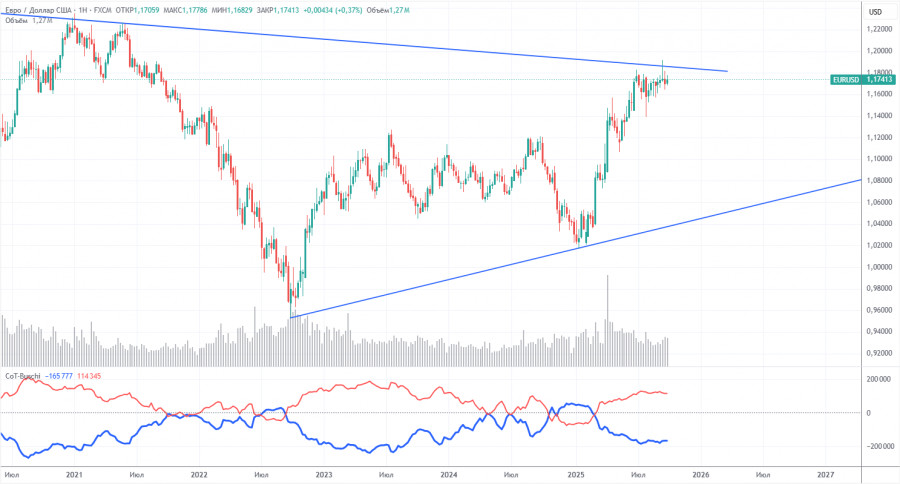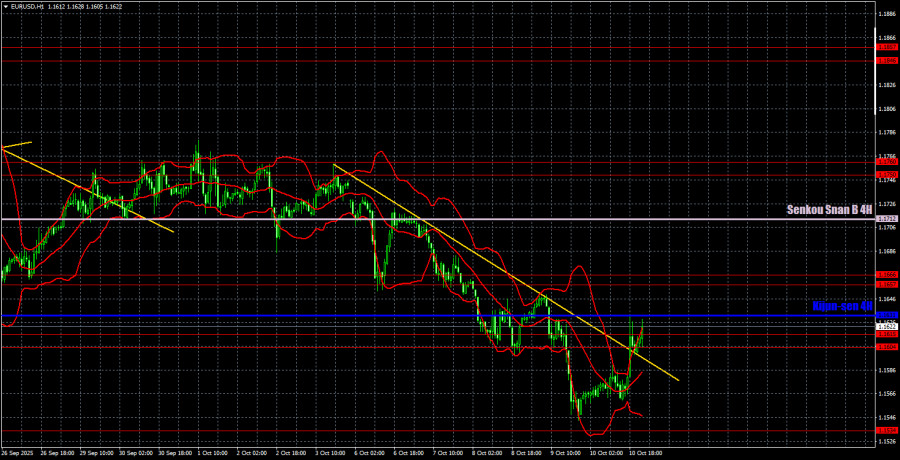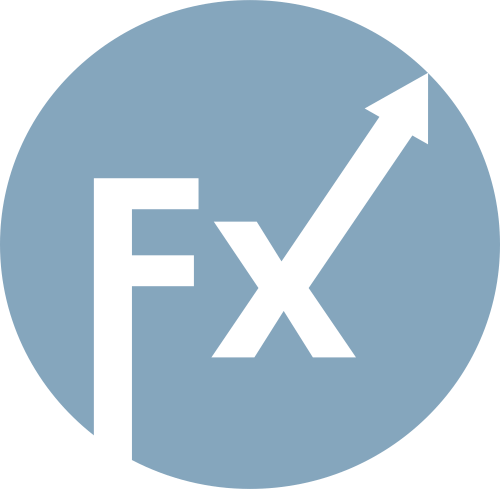On Friday, the EUR/USD currency pair finally showed some growth. The ironic twist is that the only macroeconomic report of the day came from the U.S., and it turned out to be stronger than expected. The University of Michigan Consumer Sentiment Index exceeded traders' forecasts by 0.8 points, which could have strengthened the dollar. However, a market that had ignored negative U.S. data for two straight weeks also ignored this positive surprise. Throughout the past week, the market focused only on developments that supported the downward movement—but on Friday, that changed.
Of course, Trump's evening speech also played a role. He announced new 100% tariffs on all imports from China. Trump was angered by Beijing's decision to tighten export restrictions on rare earth metals. He immediately accused China of being hostile and trying to hold the world hostage. The irony here is that it's Trump who is forcing his rules upon the world, while China continues trading with any nation willing to do business.
On the 5-minute timeframe, no trading signals were formed during the day. More precisely, no signal occurred during the entire session. Only at the very end of the day and week did the pair break through the 1.1604–1.1615 area, but by then, any trade entry was probably too late. It's also worth noting that on the hourly TF, the pair broke above the descending trend line, suggesting that the trend may be shifting toward the upside.

The latest Commitment of Traders (COT) report is dated September 23. As shown in the chart, the net position of non-commercial traders had been bullish for a long time. Bears briefly shifted into dominance at the end of 2024 but quickly lost control. Since Trump began his second term as U.S. president, only the dollar has been consistently falling.
While we can't say with 100% certainty that the dollar's decline will continue, current global developments suggest that scenario. Fundamentally, we still see no major factors to support the euro's growth. However, we do see plenty of factors weighing down the dollar.
The global downtrend for the euro remains intact, but at this point, past 17-year price tendencies are increasingly irrelevant to current market dynamics. Once Trump ends his trade wars, the dollar may resume strengthening—but recent events show that the wars are far from over.
The possible loss of Federal Reserve independence is another major bearish factor for the greenback.
The red and blue lines on the indicator show that the bullish sentiment persists. During the latest reporting week, long positions held by the "Non-commercial" group declined by 800 contracts, while short positions increased by 2,600. Thus, the net position decreased by 3,400 contracts over the week.

On the hourly time frame, EUR/USD may have completed its downtrend last week. The trendline was breached, so now the euro needs to consolidate above the Kijun-sen line to confirm further upward movement—at least toward the Senkou Span B line. We believe it is already high time for the euro to rise. And, according to Donald Trump, it seems he agrees, which is quite amusing.
For October 13, we highlight the following key levels for trading:
1.1234, 1.1274, 1.1362, 1.1426, 1.1534, 1.1604–1.1615, 1.1657–1.1666, 1.1750–1.1760, 1.1846–1.1857, 1.1922, 1.1971–1.1988; as well as the Ichimoku indicator lines: Senkou Span B (1.1733) and Kijun-sen (1.1657). Note: Ichimoku lines may shift positions during the day, and this must be taken into account when evaluating signals. Always remember to adjust the Stop Loss to breakeven after the price moves 15 pips in the right direction. This ensures protection from false signals.
For Monday, there are no significant events or reports scheduled in either the U.S. or the Eurozone. Therefore, the market may see a classic "slow Monday."
On Monday, traders may trade from the 1.1604–1.1615 and 1.1657–1.1666 areas, as well as from the critical Ichimoku lines. Since no significant events are scheduled, there's a high chance of low volatility and range-bound movement. However, the market may continue reacting to Trump's new tariffs, so the U.S. dollar remains at risk, and current price levels may be attractive for long positions.

RYCHLÉ ODKAZY